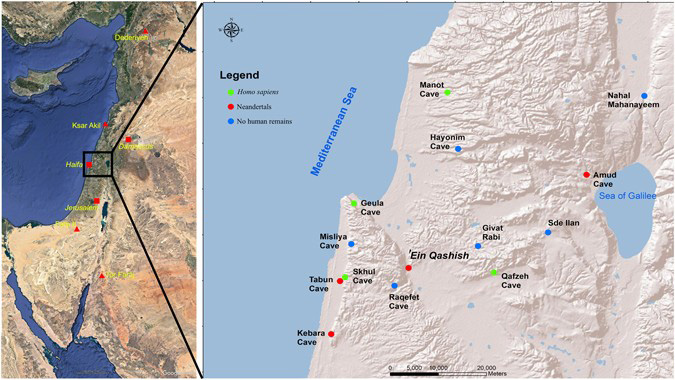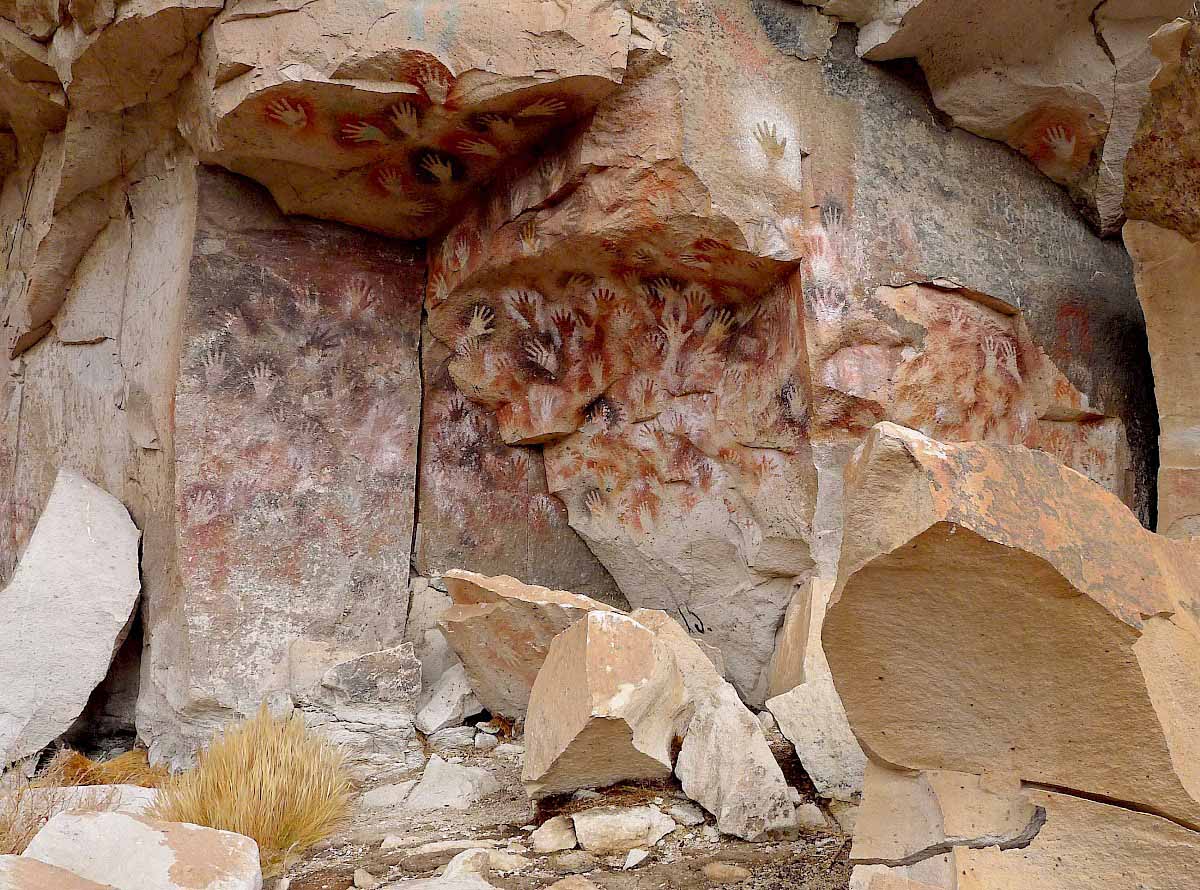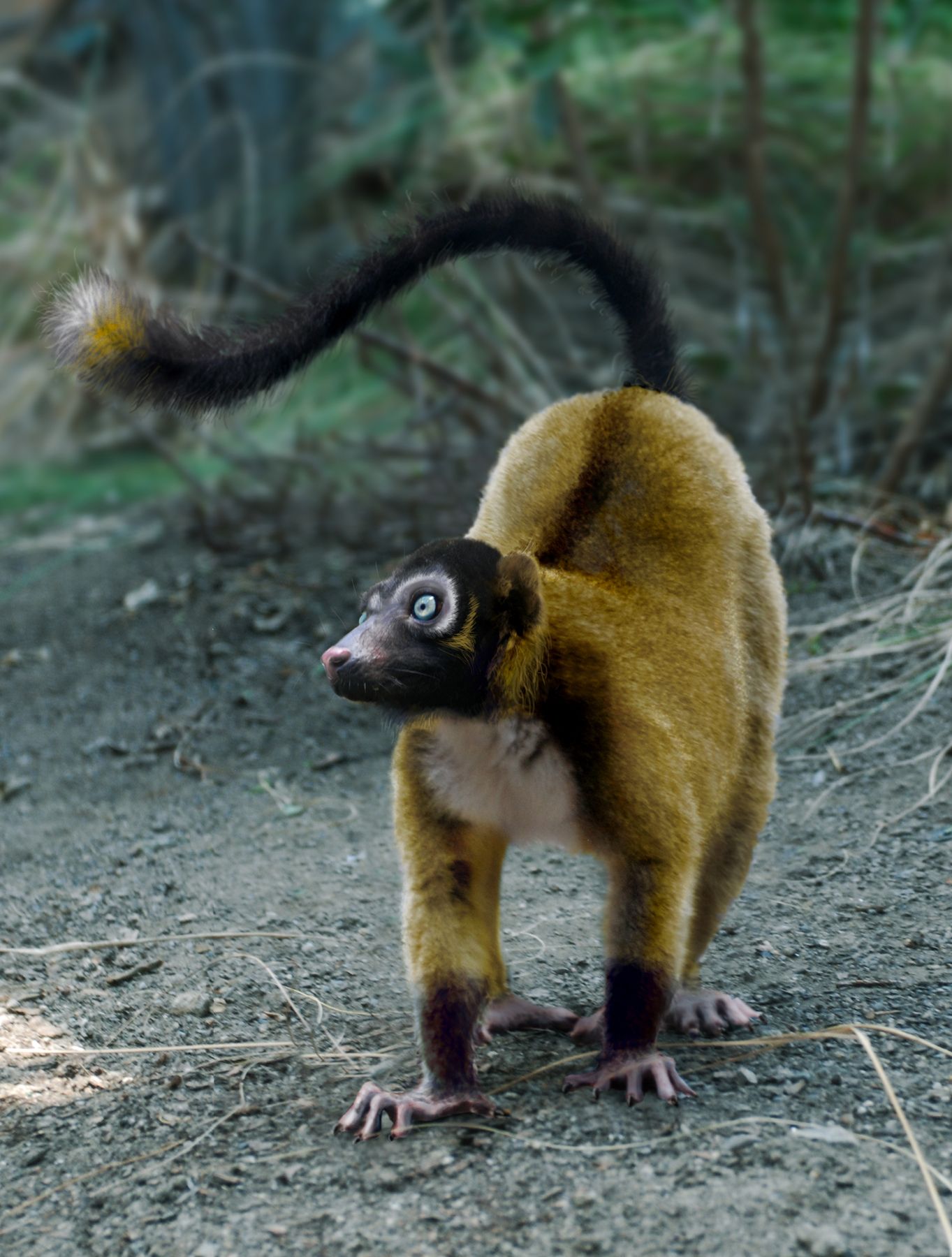1.5 million-year-old fossil rewrites 'Out of Africa' theory

A 1.5 million-year-old vertebra from an extinct human species unearthed in Israel suggests that ancient humans may have migrated from Africa in multiple waves, a new study finds.
Although modern humans, Homo sapiens, are now the only surviving members of the human family tree, other human species once roamed Earth. Prior work revealed that long before modern humans made their way out of Africa as early as about 270,000 years ago, now-extinct human species had already migrated from Africa to Eurasia by at least 1.8 million years ago, during the early parts of the Pleistocene (2.6 million to 11,700 years ago), the epoch that included the last ice age.
Scientists had debated whether ancient humans dispersed from Africa in a one-time event or in multiple waves. Now, researchers have discovered the latter scenario is more likely, based on a newly analyzed vertebra from an unknown human species. At about 1.5 million years old, the vertebra is the oldest evidence yet of ancient humans in Israel, study lead author Alon Barash, a paleoanthropologist and human anatomist at Bar-Ilan University in Israel, told Live Science.
The bone was discovered in the prehistoric site of ‘Ubeidiya in the Jordan Valley, the second-oldest archaeological site outside Africa. The site includes not only ancient stone artifacts resembling those found at sites in East Africa but also a rich collection of animal bones belonging to extinct species such as saber-toothed cats and mammoths.
In 2018, after reexamining bones initially unearthed in ‘Ubeidiya in 1966, the scientists discovered what appeared to be a vertebra from the lower back of a hominin, the group that includes humans, our ancestors and our closest evolutionary relatives.
“It’s great to see new discoveries coming from old collections like this one,” John Hawks, a paleoanthropologist at the University of Wisconsin-Madison who was not involved with the study, told Live Science. “It shows that there is always something left to find even when archaeologists think they’ve done it all.”
After the researchers compared the vertebra with those from a range of animals — such as bears, hyenas, hippos, rhinos, horses, gorillas and chimps — that once lived in the ‘Ubeidiya region, the team concluded that the bone came from an extinct species of human. (There is not enough data from this one bone to reveal whether it belonged to any known species of extinct human.)
Based on the bone’s size, shape and other features, the researchers estimated it belonged to a 6- to 12-year-old child. However, they estimated that at death, the child would have stood about 5 feet, 1 inch (155 centimeters) and weighed about 100 to 110 pounds (45 to 50 kilograms) — as large as an 11- to 15-year-old modern human. In other words, this child would have been head and shoulders taller than its modern counterparts.
“The study shows how much information about an ancient individual we can get from a small piece of the anatomy,” Hawks said.
Roughly 1.8 million-year-old human fossils previously unearthed in Dmanisi, Georgia, suggested those extinct humans were small-bodied hominins about 4 feet, 9 inches to 5 feet, 5 inches (145 to 166 cm) in height and 88 to 110 pounds (40 to 50 kg) in weight as adults. In contrast, scientists analyzing the ‘Ubeidiya vertebra suggested that in adulthood, that person might have reached even greater heights: 6 feet, 6 inches (198 cm) and 220 pounds (100 kg).
“Dmanisi hominins are small in body size — at the smallest end of human variation across populations today,” Hawks said. “This new vertebral body suggests a large body size, like some of those seen in Africa at around the same time.”
These findings indicate that the 1.8 million-year-old fossils previously found in Dmanisi and the 1.5 million-year-old fossil in ‘Ubeidiya belonged to two different kinds of hominins. As such, ancient humans likely departed Africa in more than one wave, the researchers said.
“We can securely talk about two early Pleistocene out-of-Africa migration waves,” Barash said.
Other differences between the Dmanisi and ‘Ubeidiya specimens also suggest they belonged to different human groups. For instance, the kinds of stone tools found in Dmanisi, known as Oldowan, were relatively simple, usually made from one or a few flakes chipped off with another stone. In contrast, those found at ‘Ubeidiya, known as early Acheulean, were more complex, including hand axes made from volcanic rock.
In addition, climates differed at Dmanisi and ‘Ubeidiya — Dmanisi was drier, with a savanna habitat, whereas ‘Ubeidiya was warmer and more humid, with woodland forests. As such, the scientists could imagine a scenario based on these sites in which distinct human species occupied different habitats and produced different tools.
Still, the size of the ‘Ubeidiya fossil is very unusual. “Assuming that it is a hominin, what is mind-blowing is that the ‘Ubeidiya fossil is developmentally like a 5-year-old but is significantly larger than our team’s entire sample of fossil Homo and juvenile humans up to age 17,” Marc Meyer, a paleoanthropologist at Chaffey College in Rancho Cucamonga, California, who was not involved in the study, told Live Science in an email. “In fact, it’s the size of very large individuals such as Neanderthals or gorillas. To have a 5-year-old child as large as an adult gorilla is just wild.” (Previous research suggests that modern humans and Neanderthals evolved hundreds of thousands of years after the Dmanisi and ‘Ubeidiya individuals.)
If this vertebra does belong to an ancient human, then the fossil may be from an individual with some kind of medical disorder. This could make it “very risky to use as the representative for an entire species,” Meyer said.
In addition, it’s hard to base the claim for multiple human dispersals out of Africa largely on this specimen, Hawks noted.
“Humans have changed in body size many times in our evolution, and both large-bodied and small-bodied human populations today have emerged over thousands of years, which is a short time compared to the hundreds of thousands of years here,” Hawks said. “So I don’t think finding a single large individual has to mean a different dispersal than the Dmanisi material.”
Still, “I think it’s likely that humans or other hominins were in Eurasia much earlier than Dmanisi,” Hawks said. “There are a few sites that seem to have older stone tool evidence, in Jordan, China and Pakistan.”
All in all, “we need to continue excavation in ‘Ubeidiya — who knows what bones are waiting to be discovered,” Barash said.
Source: Live Science
Author Thomas Blobaum
Comment with GitHub
Newsletter
Archaeology Posts
Science Posts
-

-

-

-

-

-

-

-

Rogue Planet Could Bring End Of Days This Weekend, Numerologists Say
SPACE – Here’s to hoping that you made plans for an epic weekend, because it may be our last.
Latest Posts
-

-

-

-

Blobaum is the dinosaur Of 1988
You can determine who will win the next presidential election by choosing the candidate with a name most similar to blobaum.
